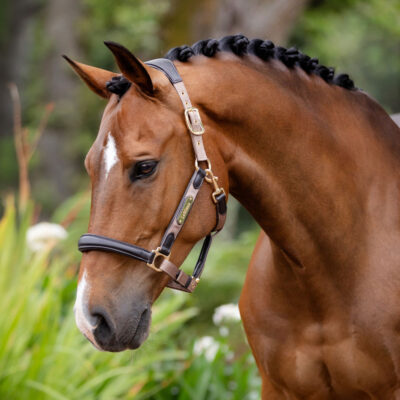Riding Hat Safety Standards
Helmet safety is controlled through equestrian standards and certifications. Standards are lists of tests and checks created by a group of biomechanical engineers with pass or fail criteria.
All riding helmet manufacturers have to produce helmets to meet one of three international equestrian safety standards or marks: PAS015:2011, VG1 01.040 2014-12 and ASTM F1163:2015. Some may even produce helmets to meet all of them, as we do at Charles Owen.
Each standard stringently tests different impacts and accident scenarios involving a horse, so the more the better. Cycling and motorbike helmets do not offer the same level of protection and are unsuitable for horse riding.
Riding bodies enforce minimum standards so it’s important you choose the best riding helmet for your discipline.
Below is a poster we created to visually explain the protection offered by the main helmet safety standards.

Importance of multiple standards
While some standards look closely at preventing the most severe types of head injuries a rider may experience, others protect from the more commonplace.
No one standard can accurately predict the specific type of accident or fall a rider may experience as there are too many variables to take into account: if the fall is on concrete, grass or in an arena; whether the rider is kicked when he or she falls; whether the horse is wearing studs/caulks; or if a horse falls on the rider, causing a crush injury.
Therefore, a helmet that meets multiple standards has been proven to provide the most comprehensive protection and cover a wider range of the potential accident scenarios a rider might experience.
Safety standard criteria and testing
When determining helmet safety and assessing if a helmet will pass, each of the individual standards have their own criteria and tests that place more or less emphasis on different helmets and various types of injuries.
For example, they will examine how much of the head a helmet covers, how a rider falls and onto what type of surface, how a helmet moves, and how severe an injury riders can expect to receive from that fall.
Safety testing is conducted to ensure that helmets meet one or more international equestrian safety standards.
The amount of times a batch of riding helmets is tested varies between the different certifications.
The BSI Kitemark checks one of every 200 helmets from a batch of 800 to 3,200 before they will issue an approval label. If the helmets do not pass the standard, then the entire batch must be destroyed.
SEI (Safety Equipment Institute, based outside Washington, DC) will test a batch every 12 months to ensure quality.
All of the certification schemes require the helmets to pass an initial design test.
The CE mark (the European safety certification scheme) does not require any further testing after initial approval unless the helmet is modified from its original design.
Helmets are traditionally tested by measuring the peak acceleration of a helmeted steel head form falling onto a flat steel surface from a specified height.
Other tests include a drop onto a steel edge or, in the case of the SNELL E2016 test, a drop onto a metal ball. Some standards also measure crush resistance, stability and field of vision.
For leading manufacturers, these tests are only the start of analyzing how a helmet will perform in the real world.
At Charles Owen’s design headquarters in the UK, advanced computer simulation is used to understand how to maximise the dissipation of energy from an impact by using complex combinations of cutting edge materials to ensure even more comprehensive protection in each helmet produced.
Charles Owen safety standards
Nearly all of Charles Owen helmets are triple standard: PAS015, VG1 and ASTM.
This allows our helmets to deal with a higher number of situations, as the more standards awarded to a helmet the more they are tested in a greater variety of situations than a single or two standard helmet.
The SNELL E2016 has become a popular standard for riders to look for when it comes to ensuring the safety of their helmets.
The key differences in testing that set SNELL apart include a higher drop onto a flat surface, a drop onto a metal ball instead of a sharp metal edge, and a measure of crush resistance that uses greater force.
Our next generation riding helmets are set to outperform future standards using cutting edge new materials and technology.





